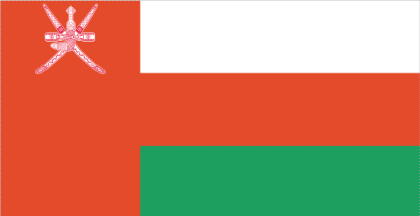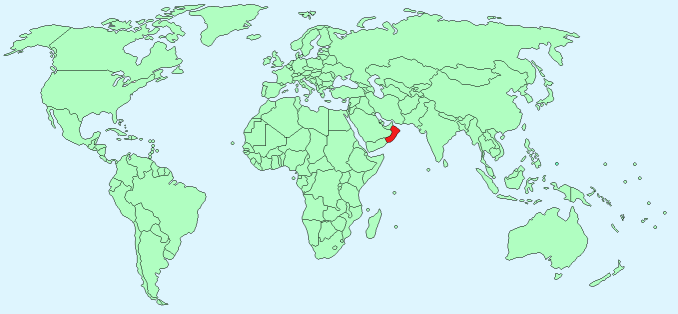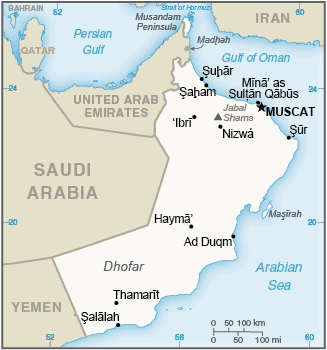Oman


Continent – Asia
Region – Western Asia, Middle East
Size – 309,500 km²
Geography – desert plain with mountains in north and south
Language – Arabic, English, Baluchi, Urdu, Indian dialects
Religion – Muslim 85.9%, Christian 6.5%, Hindu 5.5% other 2.1%
Monetary Unit – Omani rial
Natural Resources – petroleum, copper, asbestos, some marble, limestone, chromium, gypsum, natural gas
Agriculture – dates, limes, bananas, alfalfa, vegetables; camels, cattle; fish
Industry – crude oil production and refining, natural and liquefied natural gas production; construction, cement, copper, steel, chemicals

Neighbouring Countries – United Arab Emirates, Saudi Arabia, Yemen
Population – 3,286,936 (2015) of which 30% are non-nationals
Population Growth Rate – 2.07%
Average Life Expectancy – 75.21
Capital City – Muscat (population 838,000)
Highest Mountain – Jabal Shams (2,980 m)
Longest River – No major rivers
Climate – Very hot, dry summers 24°C to 40°C, hot, dry winters 18°C to 25°C
Yearly Rainfall – 6 cm approx November to April
Plant Life – desert shrub, grass, date, palm, coconut, frankincense, oleander, acacia
Animal Life – cheetah, hyena, fox, wolf, hare, goats, camel, lizards, snakes, scorpions, turtles
Bird Life – vulture, eagle, stork, bustard, Arabian partridge, bee eater, falcon and sunbird
Harvard Reference for this page:
Heather Y Wheeler. (2015). Oman. Available: https://www.naturalhistoryonthenet.com/Facts_Figures/Country_Facts/oman.htm. Last accessed Tuesday, July 19, 2016
Facts and Figures Pages
